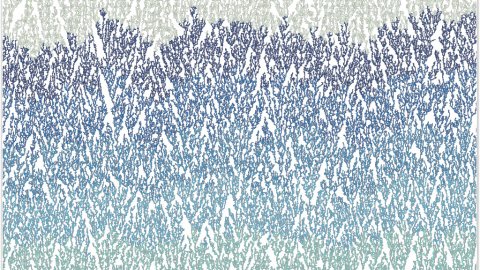The Poincaré conjecture in dimensions 3 and 4.
Abstract
In this talk we will review some of the main ideas around Hamilton's program for the Ricci flow and see how they fit together to provide a proof of the Poincaré conjecture in dimension 3. We will then analyse this tools in the context of 4-manifolds.
A Cell Based Particle Method for Modelling Dynamic Interfaces
Abstract
15:45
The symmetries of the free factor complex
Abstract
I shall discuss joint work with Mladen Bestvina in which we prove that the group of simplicial automorphisms of the complex of free factors for a
free group $F$ is exactly $Aut(F)$, provided that $F$ has rank at least $3$. I shall begin by sketching the fruitful analogy between automorphism groups of free groups, mapping class groups, and arithmetic lattices, particularly $SL_n({\mathbb{Z}})$. In this analogy, the free factor complex, introduced by Hatcher and Vogtmann, appears as the natural analogue in the $Aut(F)$ setting of the spherical Tits building associated to $SL_n $ and of the curve complex associated to a mapping class group. If $n>2$, Tits' generalisation of the Fundamental Theorem of Projective Geometry (FTPG) assures us that the automorphism group of the building is $PGL_n({\mathbb{Q}})$. Ivanov proved an analogous theorem for the curve complex, and our theorem complements this. These theorems allow one to identify the abstract commensurators of $GL_n({\mathbb{Z}})$, mapping class groups, and $Out(F)$, as I shall explain.
All-at-once solution of time-dependant PDE-constrained optimization problems
Abstract
All-at-once schemes aim to solve all time-steps of parabolic PDE-constrained optimization problems in one coupled computation, leading to exceedingly large linear systems requiring efficient iterative methods. We present a new block diagonal preconditioner which is both optimal with respect to the mesh parameter and parallelizable over time, thus can provide significant speed- up. We will present numerical results to demonstrate the effectiveness of this preconditioner.
14:15
Reconstructing recent Atlantic overturning variability from surface forcing
14:15
Inter-annual and Intra-annual Variability in River Flow and Inundation in African River Systems
Abstract
The role of surface-water flooding in controlling fluxes of water and carbon between the land and the atmosphere is increasingly recognized in studies of the Earth system. Simultaneous advances in remote earth observation and large-scale land-surface and hydrological modeling promise improvements in our ability to understand these linkages, and suggest that improvements in prediction of river flow and inundation extents may result. Here we present an analysis of newly-available observational estimates of surface water inundation obtained through satellite Earth observation with results from simulations produced by using the Joint UK Land Environment Simulator (JULES) land-surface model operating at 0.5 degree resolution over the African continent. The model was forced with meteorological input from the WATCH Forcing Data for the period 1981-2001 and sensitivity to various model configurations and parameter settings were tested. Both the PDM and TOPMODEL sub-grid scale runoff generation schemes were tested for parameter sensitivities, with the evaluation focussing on simulated river discharge in sub-catchments of the Congo, Nile, Niger, Orange, Okavango and Zambezi rivers. It was found that whilst the water balance in each of the catchments can be simulated with acceptable accuracy, the individual responses of each river vary between model configurations so that there is no single runoff parameterization scheme or parameter values that yields optimal results across all catchments. We trace these differences to the model’s representation of sub-surface flow and make some suggestions to improve the performance of large-scale land-surface models for use in similar applications. Our findings also demonstrate links between episodes of extensive surface water flooding and large-scale climatic indices, although the pattern of correlations contains a level of spatial and temporal detail that warrants careful attention to the climatology of individual situations. These findings suggest that the use of Earth observation data together with improved models of large-scale hydrology have the potential to improve our ability to predict surface-water flooding and to develop our understanding of the role of flooding in driving components of the water and carbon cycles.



